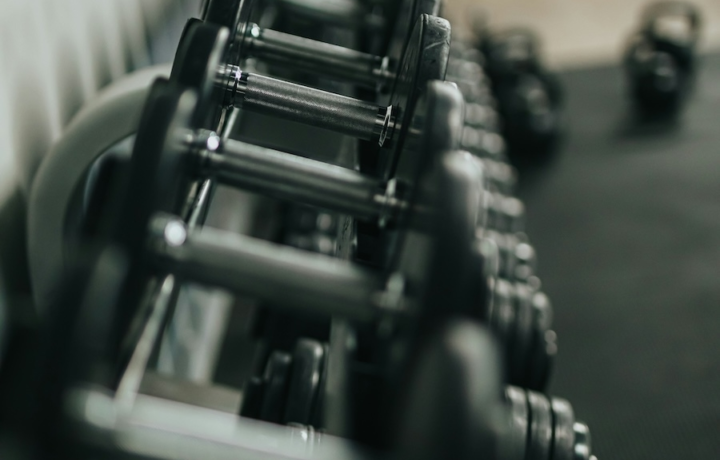Exercise
Inchworm

Inchworm
How to Perform
- Stand tall with your feet hip-width apart, arms at your sides, and maintain a neutral spine position.
- Hinge at your hips and bend forward, placing your palms flat on the floor in front of your feet while keeping your legs as straight as possible.
- Walk your hands forward away from your feet, keeping your core engaged and maintaining a straight line from head to heels as you move into a high plank position.
- Pause briefly in the high plank position, ensuring your shoulders are stacked over your wrists and your body forms a straight line.
- Begin walking your hands back toward your feet in small, controlled movements while keeping your legs straight or with minimal bend in the knees.
- As your hands approach your feet, allow your hips to rise upward, transitioning into a forward fold position.
- Once your hands reach your feet, pause briefly in the forward fold, breathing deeply while maintaining tension in your hamstrings.
- Slowly roll up to the starting position, stacking one vertebra at a time until you return to standing, and exhale at the top.
Important information
- Keep your core engaged throughout the entire movement to protect your lower back and maintain proper form.
- Take small, controlled steps with your hands rather than reaching too far, which helps maintain stability and proper alignment.
- If you feel excessive hamstring tightness, slightly bend your knees to prevent straining the muscles while still getting an effective stretch.
- Focus on creating a straight line from head to heels during the plank portion, avoiding sagging hips or raised buttocks.

Inchworm
Exercise Details
Primary Muscles
Muscle Groups
Mechanic
Built for progress
Take the guesswork out of training
Create personalized AI-powered workout plans that evolve with you. Train smarter, track every rep and keep moving forward, one workout at a time.






The Inchworm is a versatile full-body exercise that seamlessly combines mobility work with core strengthening and cardiovascular benefits, making it perfect for beginners who want to build a solid foundation for their fitness journey. This dynamic movement primarily engages your abdominal muscles and front deltoids (shoulders), creating a functional pattern that mimics natural human movement.
As a staple in both warm-up routines and high-intensity interval training (HIIT) circuits, the Inchworm serves multiple purposes in your fitness regimen. When used as a warm-up, it gradually increases your heart rate while simultaneously preparing your muscles and joints for more intense activity. The gentle stretching component helps improve flexibility in your hamstrings, calves, and lower back—areas that often become tight from prolonged sitting.
The beauty of the Inchworm lies in its comprehensive approach to mobility. The exercise takes your body through a range of motion that activates multiple joints and muscle groups, enhancing your overall movement quality. Your shoulders, spine, hips, and ankles all receive attention during this single exercise, making it extremely efficient for those with limited workout time.
From a core perspective, the Inchworm creates a continuous tension through your midsection as you move through the exercise. This isometric component trains your abdominals, obliques, and lower back to stabilize your spine during movement—a crucial skill for injury prevention and performance enhancement in daily activities and sports.
When incorporated into HIIT workouts, the Inchworm elevates your heart rate effectively, contributing to improved cardiovascular health and calorie burning. The controlled nature of the movement also allows you to adjust the pace based on your fitness level and goals, making it adaptable for recovery days or more challenging sessions.
For those new to fitness, the Inchworm offers an approachable entry point that delivers multiple benefits without requiring equipment or advanced skill. As your strength and mobility improve, you can progress this exercise with variations that continue to challenge your body in new ways.
FAQ - Inchworm
The Inchworm primarily engages your core muscles (especially the abdominals) and front deltoids (shoulders). It also activates your hamstrings, calves, lower back, and chest while improving mobility throughout your shoulders, spine, hips, and ankles.
If you're new to the exercise, bend your knees slightly during the forward fold to reduce hamstring strain. You can also take smaller steps with your hands and perform fewer repetitions until you build strength and flexibility. As you progress, gradually straighten your legs and increase the distance covered.
The three most common mistakes are sagging in the lower back during the plank position, rushing through the movement without control, and not walking the hands out far enough. Focus on maintaining a neutral spine, moving with deliberate control, and creating a full-length plank position with your hands directly under your shoulders.
Inchworms are versatile enough to include 2-4 times weekly, either as part of your warm-up routine (6-8 repetitions) or within your HIIT circuits (10-12 repetitions). They're gentle enough for frequent use while still providing meaningful benefits for mobility and core strength.
Yes, you can intensify the exercise by adding a push-up at the plank position, incorporating a jump when returning to standing position, or performing it with one leg raised during the plank phase. These variations increase the core stability demands and cardiovascular intensity of the movement.








